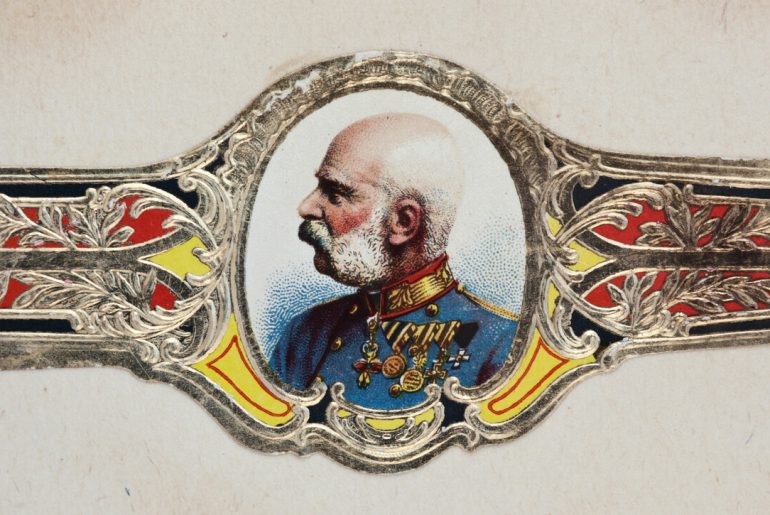For cigar enthusiasts and collectors, the cigar band is more than just a piece of decorative paper wrapped around a cigar. It tells a captivating story about the cigar’s origin, brand, and quality. Understanding how to read cigar bands is a valuable skill that enhances the enjoyment of the smoking experience and allows enthusiasts to appreciate the rich heritage of cigars. In this guide, we’ll explore the key elements of cigar bands and how beginners can interpret them like seasoned collectors.
Cigar Bands—The Stuff of Legends
In the past, cigar bands were unknown. Still, a legendary story claims everything changed when Catherine the Great, the controversial tsarina in the late 1700s, demanded her cigars be wrapped in fine silk. As an avid cigar enthusiast, Catherine wanted to enjoy her cigars without staining her fingers. Her influence was substantial, and the finest cigar manufacturers started wrapping their cigars in silk to please her.
Members of the court followed the tsarina’s example. They wrapped their cigars in pieces of cloth or paper to keep up with being fashionable. Some credit the Spanish nobles with protecting their gloves from stains, while others credit English gentlemen with the same invention. This practice eventually evolved into the thin and elegant bands we see on cigars today.
However, Gustave Bock is often credited with pioneering the practice in the 1830s, while some claim that Ramon Allones was the first brand to use cigar bands. By 1855, cigar bands had become widespread in Cuba and a standard feature on cigars.
Clarifying Terminology—Cigar Band or Banderole?
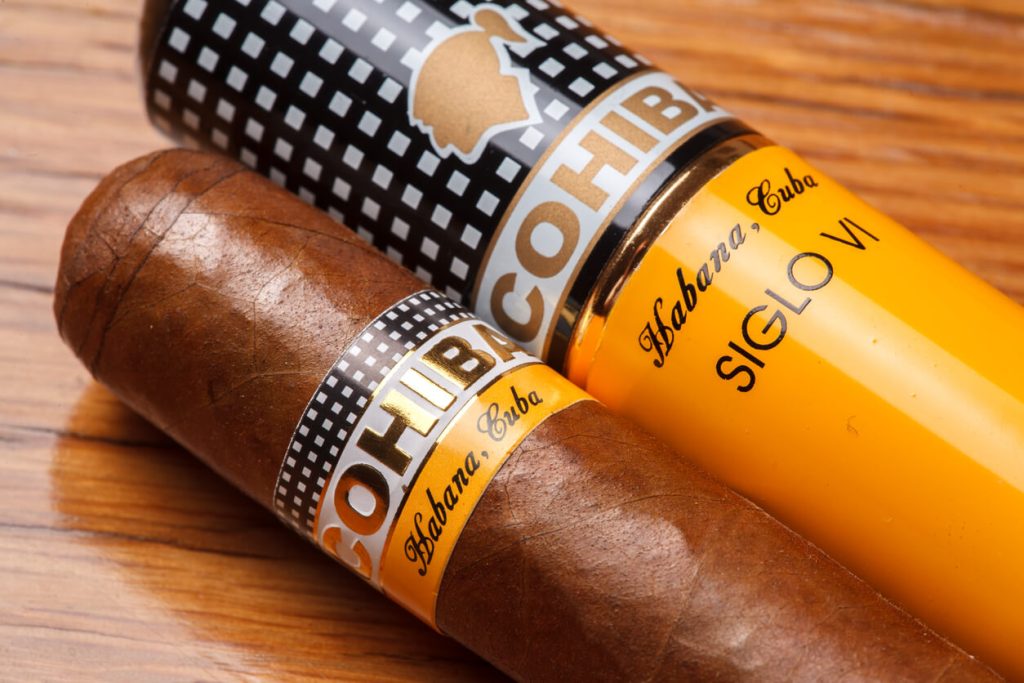
The term ‘banderole’ has been used for a while now, but it’s somewhat incorrect. Originally, banderoles were the tax stamps found on tobacco boxes in the early 1900s. However, over time, the term got associated with the paper bands wrapped around cigars. It’s interesting to note that the name “belly band” for these cigar bands comes from the cummerbund, a wide waist sash/band often worn with black tie outfits instead of a waistcoat. Just like a gentleman’s cummerbund is wrapped around the waist, the belly band wraps around the cigar.
In Cuba, they call the belly band’ Anilla,’ which comes from the Spanish word ‘Anillo,’ meaning band. So, ‘cigar band’ is probably the most fitting name for these paper bands, considering their remarkable transformation over almost two centuries.
The Basics of Cigar Bands
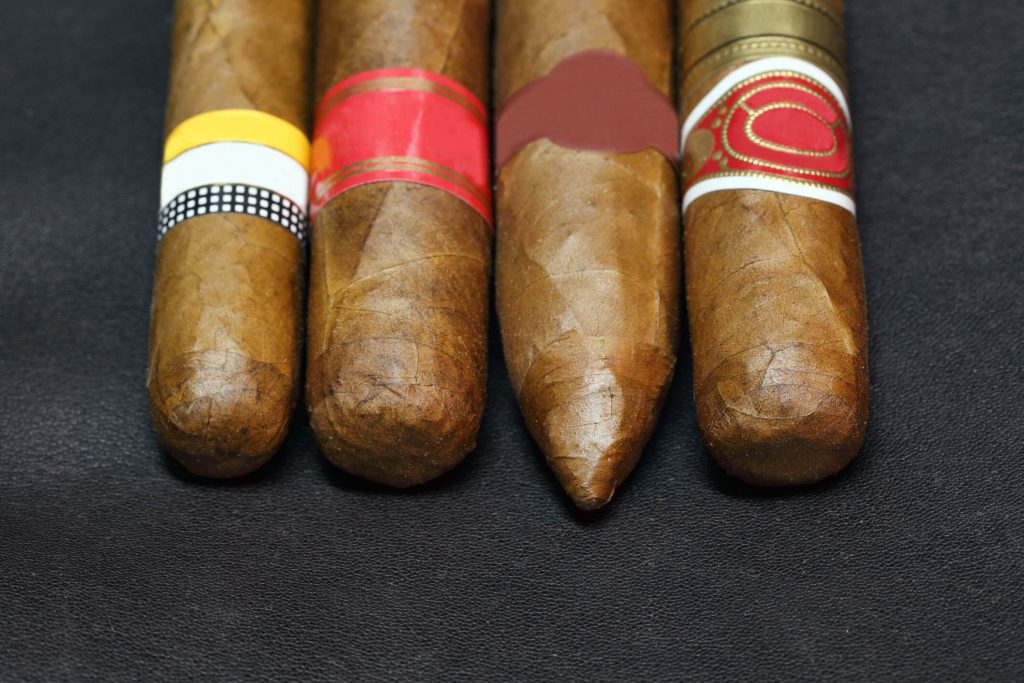
Cigar bands, also known as cigar labels or rings, are small strips of paper or foil wrapped around the body of a cigar. Their primary function is to identify the cigar’s brand, protect the wrapper leaf, and add an aesthetic touch to the overall presentation. Manufacturers carefully designed each cigar band to reflect the brand’s identity, making them an essential part of a cigar’s allure.
Understanding the Different Cigar Bands
There are two main types of cigar bands: primary and secondary. The primary band is the main band that displays the brand name and logo. In contrast, secondary bands (if present) indicate specific lines or collections within the brand. Secondary bands usually adorn the foot or cap of the cigar and sometimes provide additional information about the cigar’s blend or aging process.
The primary band serves as the ‘face’ of the cigar, showcasing the brand’s logo, name, and often the country of origin. It is the most critical element to interpret when reading cigar bands, as it provides vital information about the cigar’s identity and quality.
Understanding the Elements
Let’s dig a bit deeper and see what we can uncover. A cigar band will feature many of the features listed below.
Brand name and logo: The most prominent feature of a cigar band is the brand name and logo. This is the most straightforward element to identify, as it typically occupies the center of the band. Brands are often named after the cigar manufacturer, region of production or iconic figures related to the brand’s history. This helps you to identify your favorite cigar, and you’ll be able to research the brand and identify potential cigars you’d like to try in the future.
The brand name on the cigar band reveals the manufacturer or company responsible for producing the cigar. Some brands have a long-standing reputation for excellence. In contrast, others may be up-and-coming, offering unique blends that appeal to different tastes. Understanding the significance of the brand name can provide insight into the cigar’s overall quality and flavor profile.
Decoding brand logos: Brand logos are designed to be visually appealing and often incorporate symbols, icons, or stylized lettering representing the brand’s identity. Some logos may be classic and straightforward, while others can be intricate and artistic. Analyzing the logo’s elements can give collectors clues about the brand’s history, heritage, and values.
Sub-band or line name: Some cigars within a brand may belong to specific lines or collections. These sub-bands can indicate different blends, wrapper types, or sizes. Identifying the sub-band allows collectors to understand the uniqueness of each cigar within a brand’s portfolio. For example, the Davidoff portfolio offers many options like the White Band, Black Band, and Davidoff Exclusives. Each series is further subdivided into different offerings spanning every budget.
Sub-bands often have distinct colors, designs, or font styles that set them apart from the primary band. The secondary band’s information may include the blend name, wrapper type (e.g., Connecticut, Maduro, Habano), and sometimes the cigar’s size or vitola. Knowing how to interpret sub-bands enables enthusiasts to explore the diverse offerings of a brand and find cigars that suit their preferences.
Country of origin: Most cigar bands proudly display the country of origin, indicating where the cigar was manufactured. Common countries of origin include Cuba, the Dominican Republic, Nicaragua, Honduras, and more. Knowing the source of a cigar helps enthusiasts appreciate the diverse flavors and characteristics of different regions.
The country of origin is crucial in the cigar world because it influences the tobacco’s growing conditions, blending techniques, and overall flavor profile. Cigars from different countries often exhibit distinct traits, such as the earthy richness of Cuban cigars or the complexity of Nicaraguan blends. By identifying the country of origin, collectors can develop a deeper appreciation for the cigar world’s varied tastes.
Quality designations: Premium cigars often incorporate quality designations on their bands. Terms such as ‘Reserva,’ ‘Gran Reserva,’ or ‘Añejo’ indicate unique aging processes that enhance the cigar’s flavor profile. Beginners should pay attention to these designations, as they often signify exceptional smoking experiences. For example:
- Reserva cigars are exceptional Habanos (Cuban cigars), crafted only on rare occasions and in limited quantities. The designation is reserved for cigars whose fillers, binders, and wrappers have been aged for at least three years before rolling. You can spot them by the additional black and silver band they bear.
- Gran Reserva is unique. They release Habanos infrequently and in limited quantities. The designation is only given to cigars whose fillers, binders, and wrappers have undergone a minimum aging period of five years at the factory before being rolled. You can recognize them by a second band on the cigars, adorned with black and gold colors.
- Añejo is a Spanish term that translates to ‘aged.’ When you come across the term ‘añejo’ on your cigar box, it shows that the tobacco has undergone a certain level of aging. In reality, all cigars undergo aging, as it’s essential to eliminate undesirable flavors like ammonia that can develop during the tobacco’s fermentation. However, the brands that label their cigars as ‘añejo’ do so because the tobacco has been aged beyond the usual duration, leading to more profound and intensified flavors. This additional aging contributes to a richer smoking experience.
Understanding these designations can guide collectors in choosing cigars that offer unique and refined smoking experiences.
Reading the Symbols
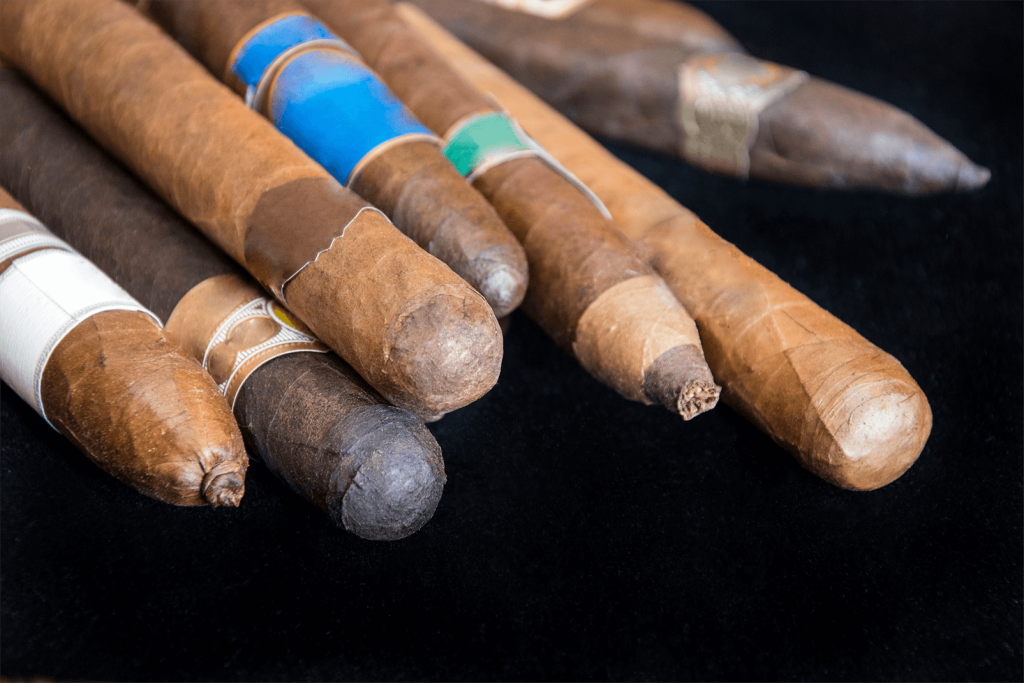
By now, we all know that manufacturers also like to show off their prestige and assure you that you are getting an exceptional product. To achieve this, they will use several symbols to show certifications, prizes their product has won, or anything else to convince you of a subliminal way to purchase their cigars.
Certification seals: Some cigar bands bear certification seals from organizations like Cigar Aficionado Magazine’s Top 25 Cigars of the Year or industry awards. These seals signify the cigar’s exceptional quality and recognition within the cigar community.
They often place certification seals on the cigar band to highlight the cigar’s achievements, accolades, or high ratings. These seals show the cigar has received recognition from industry experts or popular publications, making it a sought-after choice among cigar enthusiasts.
Artwork and imagery: What would a cigar brand be without some creativity? Cigar bands are a canvas for creative artwork and imagery. Elaborate designs, historical figures, and cultural symbols are commonly found on cigar bands, adding character and charm to each cigar. Appreciating the artwork allows collectors to connect with the cigar’s story on a deeper level.
The artwork on cigar bands is an essential aspect of their allure. Each design may carry historical significance, showcase the brand’s heritage, or depict cultural elements related to the cigar’s origin. Artwork can be intricate, bold, or elegant, reflecting the brand’s identity and the cigar’s intended experience. Taking the time to admire and interpret the artwork enriches the collector’s understanding of the cigar’s history and artistic value.
Identifying Counterfeit Cigars
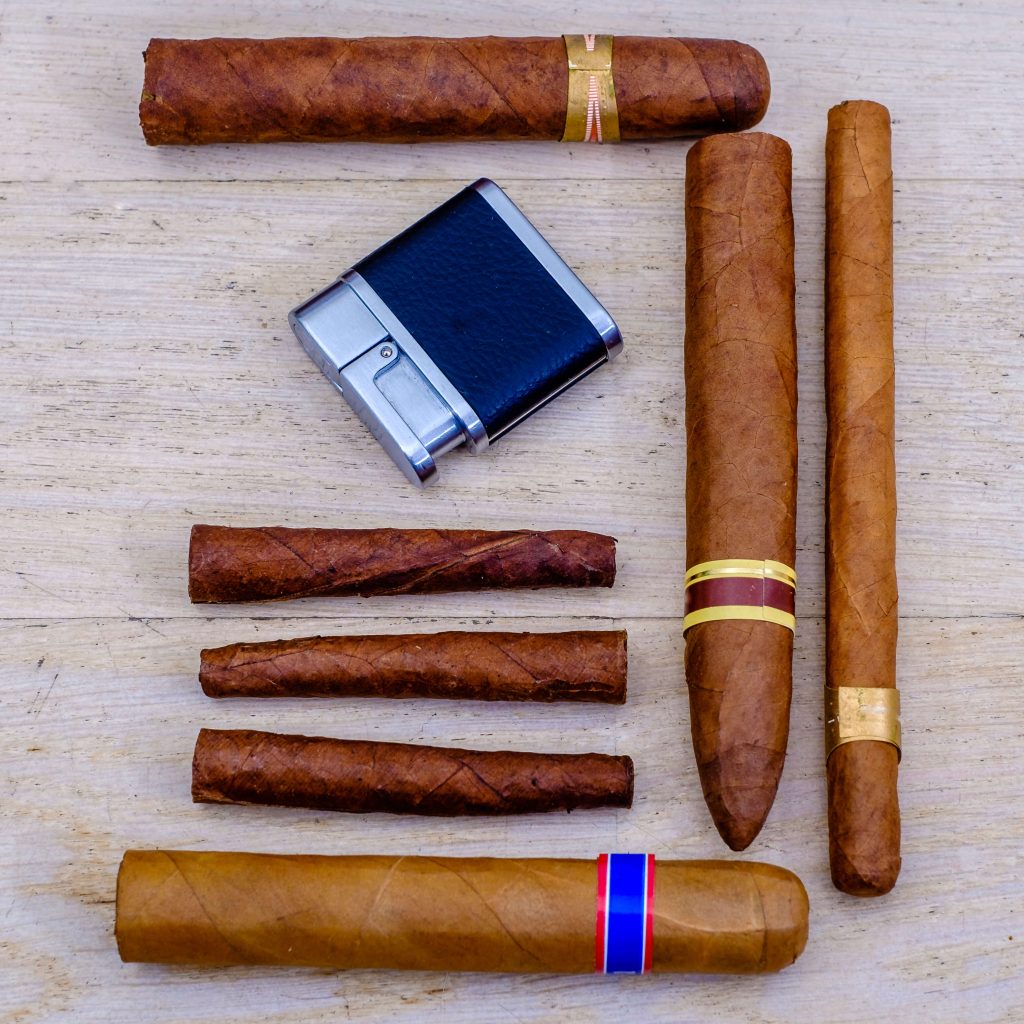
They say imitation is the highest form of flattery. Unfortunately, counterfeiters who imitate top brands do more harm than good—the growers, rollers, and everybody within the industry suffer when unsuspecting buyers buy counterfeits.
For collectors, identifying counterfeit cigars is crucial. Paying attention to the finer details of the cigar band, such as misspellings, inconsistent artwork, or incorrect logos, can help distinguish genuine cigars from fakes. Authentic cigars boast high-quality printing and precise band alignment on the cigar.
Spotting counterfeit cigars: Counterfeit cigars attempt to mimic the appearance of authentic ones, but they often exhibit subtle differences. Carefully inspecting the cigar band for any inconsistencies or inaccuracies in the design, print quality, or color can help identify counterfeit cigars. Additionally, purchasing cigars from reputable retailers and certified sources reduces the risk of acquiring counterfeit products.
Keeping Track of Cigars
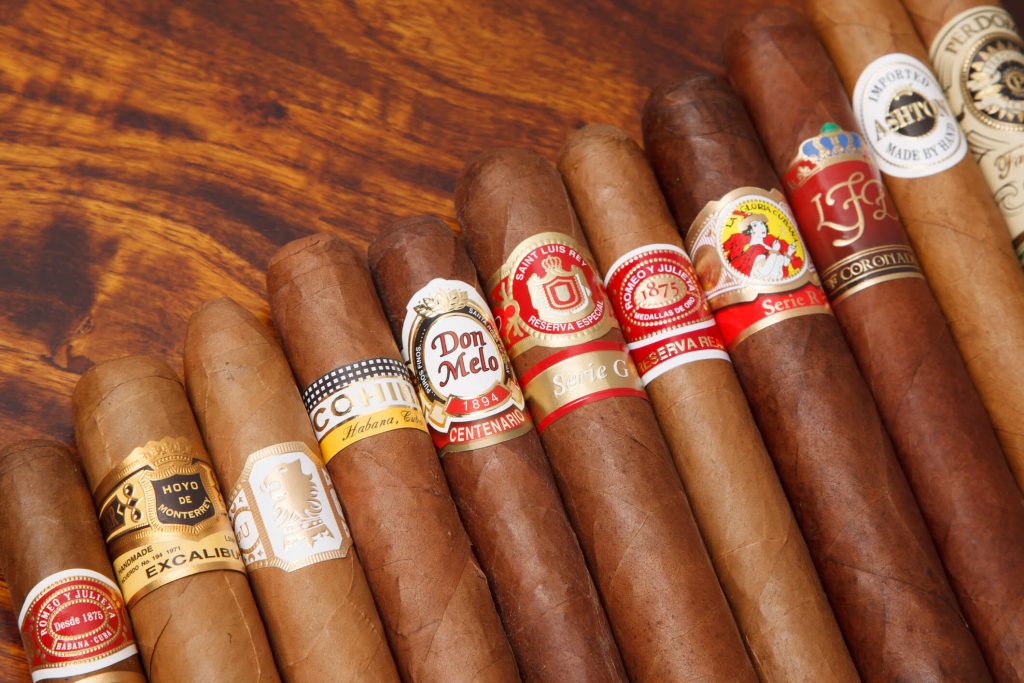
As your collection grows, keeping track of the cigars you acquire is essential. You can create a logbook or digital database with details like brand, sub-band, size, and date of purchase. This record-keeping allows you to monitor your collection’s growth and aids in identifying the cigars you enjoy the most.
A cigar collection log is a valuable resource for enthusiasts to track their acquisitions, preferences, and overall experiences. Recording the brand, sub-band, wrapper type, and personal tasting notes enables collectors to record their favorite cigars comprehensively, ensuring they can enjoy those cigars again.
Cigar manufacturers often release limited edition or special release cigars with unique bands to commemorate special occasions or milestones. These bands may feature exclusive artwork, special embossing, or even precious metals, making them highly sought-after by collectors. Identifying these bands can add a touch of excitement and exclusivity to your cigar collection.
Collecting Vintage Cigar Bands
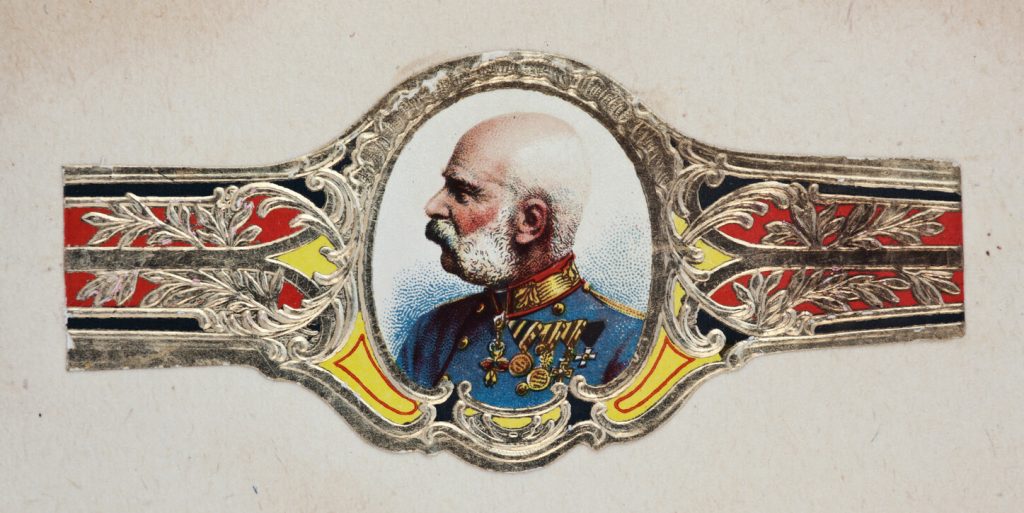
Cigar bands have a rich history dating back to the early 1800s when they were first used to differentiate brands and protect the cigars’ quality. As you delve deeper into the world of cigar bands, you’ll uncover fascinating stories of how some iconic brands originated and how their bands have evolved. Learning about the historical significance of cigar bands adds depth to your appreciation for these beautifully crafted pieces of art.
For avid collectors, vintage cigar bands hold a special allure. Vintage bands from bygone eras offer a glimpse into the past, displaying unique artwork and styles that may no longer be used today. Some collectors focus solely on acquiring these rare finds, and their collections become a treasure trove of historical cigar memorabilia.
Back in the ‘Golden Age’ of cigar art, cigar bands appealed uniquely to children due to their vibrant colors and diverse designs. Their easy availability made them a popular collectible among youngsters. These bright bands were often gathered and creatively combined into collage art by scrapbookers. Today, surviving examples of these artistic collages are highly sought after by folk art collectors.
In the present day, both vintage and modern cigar bands continue to be collected, and enthusiasts have come together to form the International Label, Seal, and Cigar Band Society. The fascinating hobby of cigar band collecting is known as vitolphilia. It continues to captivate collectors, preserving and celebrating the artistry found in these unique bands.
Showcasing Your Collection
Displaying your cigar band collection can be a rewarding endeavor. There are various ways to showcase your bands, such as using specialized albums, frames, or shadow boxes. Properly organizing and displaying your collection allows you to appreciate and share your passion with others who may be intrigued by the world of cigar bands.
Conclusion
Mastering the art of reading cigar bands is a rewarding journey for beginners and seasoned collectors. The seemingly simple bands that adorn each cigar carry stories of tradition, artistry, and heritage within their designs. By understanding the elements, symbols, and quality designations found on cigar bands, you unlock a deeper appreciation for the cigars you smoke, the brands you cherish, and the rich history of this timeless tradition. As you grow your cigar band collection, explore the diverse offerings available, from limited editions to vintage finds, and savor the unique experiences each band represents. Remember to pay attention to counterfeit signs to ensure your collection remains authentic and valuable. Cherish your cigars, admire the bands, and let your passion for cigars and their captivating bands grow. Happy collecting and happy smoking!

